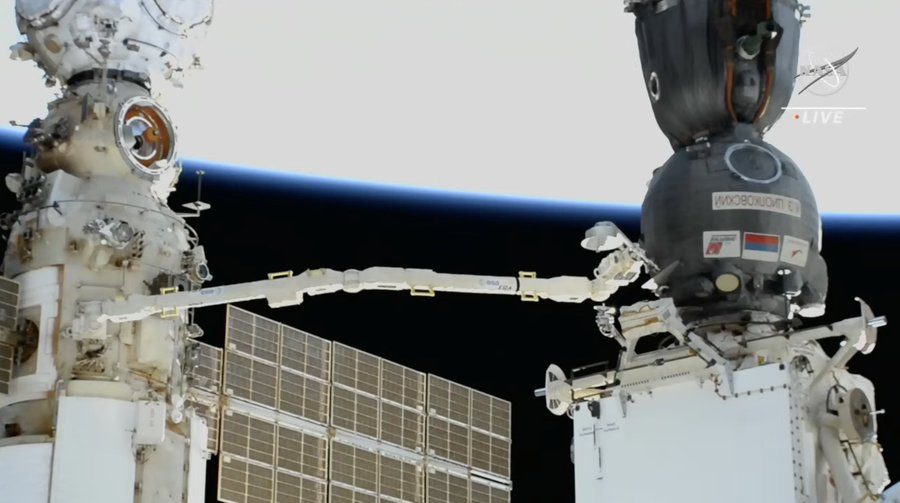The Soyuz MS-22 sprung a coolant leak while still attached to the International Space Station (ISS) on 14 December. Soyuz MS-22, which brought a crew of three to the ISS in September, is also the crew’s means of returning home.
The leak, which spewed droplets of fluid into space, was deemed so serious that a planned spacewalk by Sergey Prokopyev and Dmitri Petelin had to be cancelled at the very last moment. The cosmonauts were in the airlock, with depressurisation already started, when the EVA was cancelled. The space station’s European Robot Arm was deployed to investigate the cause of the leak and to ascertain whether the spacecraft was safe enough to use for the crew’s return.
Update on 3rd January 2023: NASA and Roscosmos were deliberating whether to send another Soyuz spacecraft to recover the crew, or to use a SpaceX Dragon, according to Reuters.
Update on 12 January 2023: A decision has been made by Roscosmos, in agreement with NASA and the other ISS partners, that the Soyuz MS-22 will not now return to Earth with humans on it, unless it is an extreme emergency. The craft will thus stay attached as a “lifeboat” until an empty new Soyuz spacecraft, Soyuz MS-23, can be launched in the Spring and use an automated docking to join itself to the ISS.
Update on 13 February 2023: During February it was revealed that the Progress MS-21 which was attached to the ISS had sprung a leak in its coolant system, similar to the radiator leak occurrence on Soyuz MS-22. This pair of failures makes the original cause of both most likely now to be a quality control issue rather than any debris or meteor strike as was originally claimed for Soyuz MS-22 by Roscosmos.
Problem with Soyuz MS-22 on the ISS right now! pic.twitter.com/V4Ymvnn2D1
— Chris Bergin – NSF (@NASASpaceflight) December 15, 2022








